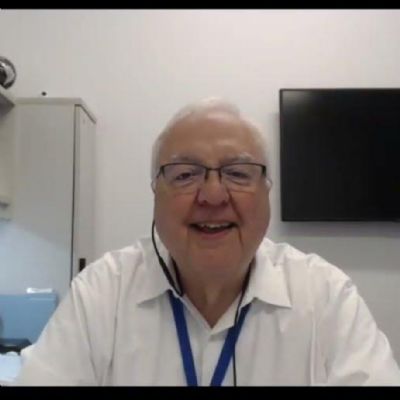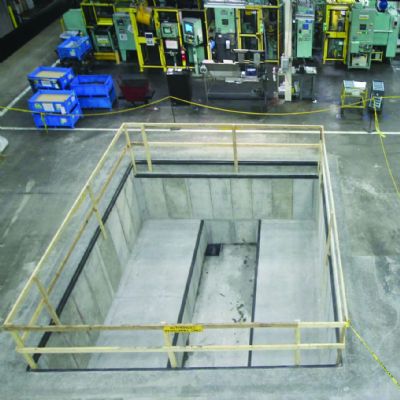New Press Mix Meets Future Challenges
As part of Gobar’s commitment to invest in capital equipment, Rolando describes its need to add new technology to its press stable, a move the company began to make a little more than a decade ago.“We were tooled for a lot of GM component/bracket work in the mid to late ’80s,” says Rolando. “Then, an influx of competition hit our area. We went from no competition in the area in 1986 to four local competitors by 1992, to more than a dozen area companies vying for our business today. We decided to change out our lower-tonnage C-frame presses to allow us to stamp larger and more sophisticated parts and assemblies.
“Our older, lower-tech smaller presses weren’t going to allow us to meet our growth goals,” continues Rolando. “We had been operating used equipment, and struggled with maintenance issues. We then started investigating all of the press technologies out there, from C-frames to straightsides and even link-motion presses.”
Eventually the firm settled on Seyi as its press supplier of choice, and has installed nearly two dozen new Seyi presses—gap frame and straightside models from 66 to 660 tons. But Gobar needed more than just higher tonnage presses to take on production of bigger parts. It required a much broader vision, investing in technology to allow it to build its own dies. The company also became more focused on part design and manufacturability, invested in additional production training for its workers, and drove the organization to become more value-added in its overall mindset.
“Today we can produce simple stampings as well as more complex parts and assemblies. Our niche is making what others around us cannot,” says Rolando.
Link Motion Leads to Growth
Rolando explained how the link-motion design of its newer Seyi presses has helped the firm increase productivity compared to its older, more traditional presses.
Link motion allows a stamper to increase approach and return slide speeds and ultimately increase production rate—by as much as 30 percent, says Rolando. Other benefits include the ability to minimize springback; extend die life due to decreased shock, noise, heat and vibration; and perform multiple functions in a single machine, such as drawing, forming and blanking.
As an example of how link-motion technology allowed Gobar to improve productivity on a job, Rolando cites a case where it switched a deep-draw job from a hydraulic press to a progressive die mounted in one of its new Seyi link-motion mechanical presses.
“Because we felt confident that we could switch the process over,” Rolando says, “we had the customer’s blessing to proceed with prototyping and, with that success, prove all of the production tests for this part. We said that we could increase production rates by two or three times over the older method, and so the customer came in and validated our processes. The link-motion presses were key to this success.”
R & D Center Triggers Tooling SuccessAlso playing a big part in Gobar’s growth strategy has been its R & D Center, introduced in 1999 to focus on developing new tooling designs and the engineering of automation and robotics projects. Projects emanating from the center include application of new CAD/CAM design technology, incorporating wire EDM for tooling production and—most importantly—ensuring Gobar’s total involvement of the manufacturing process from front-end part design through die build and tryout.
The firm also has met the challenge of producing tighter-tolerance stampings being requested by its customers in the automotive and electronics markets. Dimensional tolerances can be as tight as 0.1 mm on some parts.
“While our modern presses help make this happen on a regular basis, all of the elements of the process—die design, the precision of the feed equipment, etc.—are just as critical,” Rolando says. “It’s important that you’ve got your coil payoff in line and you don’t have issues such as camber. All of these factors, and more, are important to a good-quality operation.”
On Gobar’s Future
Gobar expects its overall growth and improvements will continue in two key areas. The first one can be found in its training commitments. The company operates its own corporate university, a place where its people (as well as employees from other local companies) can attend various training sessions. The stated goal of the corporate university: “To enable our associates to achieve the goals and objectives of the organization with a strong emphasis on a culture of discipline, quality, precision and teamwork.” A wide range of subjects are taught including CAD/CAM and other programming, mechanical engineering, management and quality control.Secondly, Rolando and his team see growth coming from taking on more subassembly work across a wide range of materials. “Our customers continue to reduce their supplier base, and for us to keep existing work and grow into new opportunities, we’re finding s to process subassemblies with metal, plastic and composite parts, even taking on the new higher strength steels,” says Rolando. “Our goal is keep the customer happy by providing the increasing level of value-added services they expect.” MF
Article provided by Seyi Presses, Inc, Tullahoma, TN; tel. 931/455-7700, www.seyi.com .
View Glossary of Metalforming Terms
See also: SEYI America, Inc.
Technologies: Stamping Presses








 Video
Video
